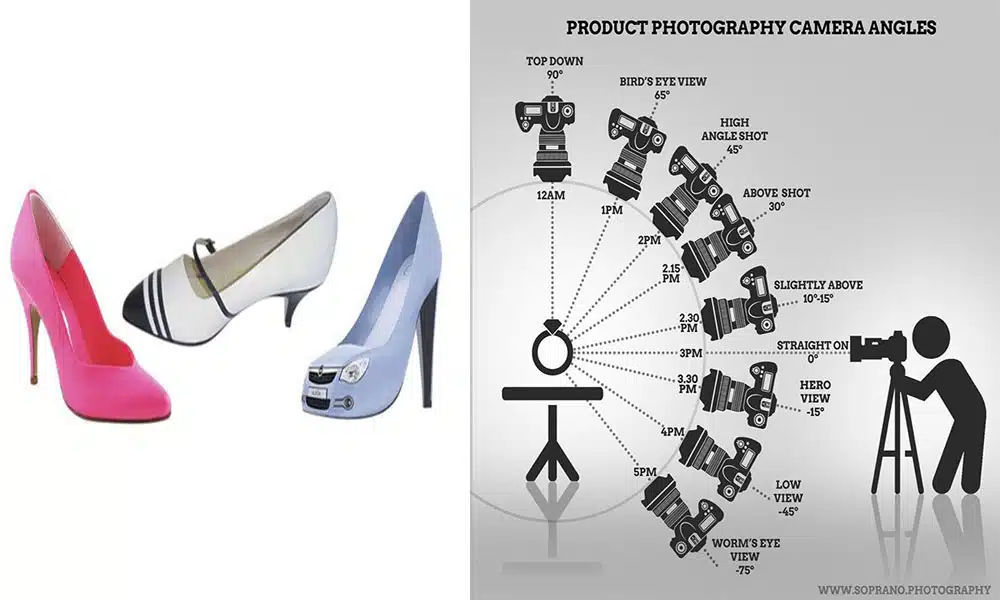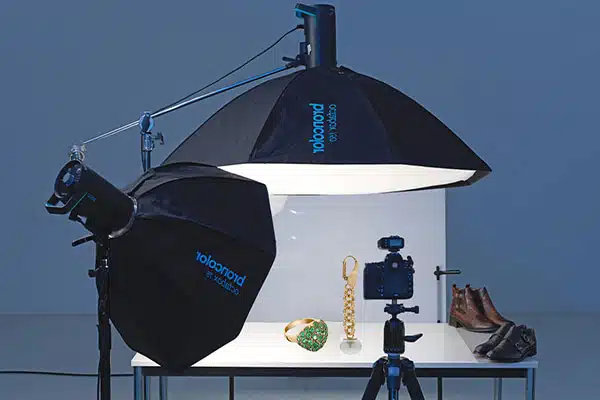
Editing product photos using a clipping path or conceptual image editing techniques. Works great as an alternative to their own location. Product photography is central to the success of any brand. Be it a big tech company like Apple, Microsoft or Samsung, etc. Without marketing, no business grows high. Great product photography can present your product the way people want to see it.
As e-commerce business is growing day by day and it will record business in the next 2 or 3 years. It will become the main go-to channel for people to do their shopping. Product photography must be premium to maintain quality which includes post-processing. For product photos, you can experiment with different themes or ideas. You can edit your product photos with different techniques but you need to spend some time editing with it. But if your product photos are intended to be used on an online platform, you need to follow certain requirements.
Product Image Editing

Today we will not talk about the image requirements required to use the e-commerce platform. We will talk about editing techniques used and effective in product photography. In this 21st century, you always have to create new things for your customers. Marketing strategies have been reinvented as e-commerce platforms have now become shopping headlines. So you need to come up with new and innovative ways of presenting your product through your post-processing.
Product photos require different types of photo editing. Such as background removal, color correction, image masking, and more. But they all start with the clipping path. You can call it a traditional technique of image editing. There are different types of product photography called conceptual product photography, which we will define differently. This is new-age product photography. You can create this in Photoshop during post-processing. Let’s dig into these two and know more.
Conceptual Product Photography
To take good theoretical photography you must come up with an innovative idea. This is the best way to speak up and take advantage of your creative freedom. To take good conceptual
photography you must come up with an innovative idea. Then you need to edit your results to reflect your dream. Conceptual photography for images is not a new thing but now it is gaining recognition. Practice creating post-processing creations for
conceptual photography. Artists use this method to research and create a single image by blending their imaginations. Most of the time, intangible objects and props convey the message quite abstractly. Although the film may be shot to tell a story, any person who sees it can easily understand it in different ways.

Consumers today are buying and selling products based on the context or environment in which the product is being consumed. This is called product conceptual photography. But
this is very expensive as you may have to travel far to get photos of just a few products. You can also do conceptual things in post-processing that will save you a lot of money. You need highly professional and creative Photoshop experts who can be
hired or even create an in-house setup. Both of them are more expensive than outsourcing. So in our opinion, outsourcing your product image is a very viable business idea.
Clipping Path

Clipping paths have categories like simple clipping path, complex clipping path, super complex or multipath. They are used according to the difficulty of your product photos. Conceptual photo editing will not be affected by whatever clipping path becomes famous. It is the basis of every photo editing type.
Product photos are not limited to a small amount this is a big business and growing fast. So if you want to climb the millionaire ladder, you need to ensure regular guaranteed service. With several product photos, you should consider outsourcing. Before
outsourcing, you should find a professional image editing company that you cannot find easily. To find a great combination of premium quality clipping path services at the best prices, you can visit Clipping Path Service. We have highly professional image editing experts in house.
What is Conceptual Photography?
Conceptual art photography begins with an idea – what the photographer wants to portray through visual images. There are no boundaries beyond this. But, when you dive deeper into the subject, it becomes clear that this common ground makes the concepts of conceptual photography very different from other forms of photography.
Fine art photography is often confused with conceptual artwork. Conceptual photography concept is definitely a type of fine art photography. In short, all conceptual photos have to be fine-tuned and not all happiness and artwork can be created conceptually.
It is better to consider an example. A common subject in fine art is a still-life portrait of a bowl of fruit on a table. It’s an art class and a staple of photography school – it teaches you shape, form, light, composition, technique, and other skills. But is it conceptual? If it’s just a bowl of fruit, skillfully and beautifully captured, probably not.
But what if, instead of starting with the idea of capturing a bowl of fruit still life, the photographer started with a more basic idea? Let’s say they want to capture loneliness. So now they approach a fruit bowl piled high with apples, bananas, and oranges. A lonely lemon sits next to it. As they compose the shot, that poor, lonely lemon is now the star of the show.
What is the difference? Both are fine art photographs. But the lonely and sad lemon is conceptual – there are deeper moods, feelings, and ideas behind the whole work.
Creative conceptual photography knows no bounds. It’s fun to dive in and explore new and unique ways to communicate familiar concepts. You can work in the same process using any production and post-production technique.
Your images can be realistic or surreal
imaginative or mundane, terrifying or comforting.
Like fine art photography, conceptual photos have many sub-genres. Conceptual portrait photography is an interesting subject. Here, instead of capturing your content as it is, you exercise complete control over the composition to communicate your ideas. Many conceptual works use models in frames, sometimes just body parts, sometimes in fanciful clothing, and sometimes processed and obscured in a blur.
How to do conceptual photography

If there’s one rule of conceptual art photography, it’s to create an image as a painter might approach creating a painting. You do not capture the snap. Every portrait photographer should take the time to consider a short and frame it well because a conceptual photographer is able to delve deeper into his experience. Here are 12 great photography composition techniques and tips for capturing eye-catching photos.
Instead, you’re setting your idea in mind. You can sit down and sketch your ideas on paper. Perhaps you have a brainstorming session, and you list all the ways you can communicate your idea. At this point, you don’t even know what objects or subjects will be in your photo, you just know the idea you want to communicate. You can spend days, weeks, or months in this stage. It may not sound like photography, but it is art at its most basic level—creativity. If you want to improve your basic photography skills, understanding these design principles can be a great help in your work.
Here are 5 top tips for unique conceptual photo shoots
Tip 1 – Devote time to brainstorming and planning
Like other fine art photographs, creative conceptual photography requires forethought. Brainstorming, mood boarding, and storyboarding are common tools people use to do this, but the process is unique to each photographer. Read our article with 15 great tips on how to create great mood boards.
What exactly are you thinking about here? Well, there is no good answer other than to say “everything”. Brainstorm your overall idea – write down whatever comes to mind. Narrow it down, organize it and filter exactly what you are trying to communicate to your audience Here are 12 tips for writing great content for your website.
Once you’ve given it some thought, sit back and think about the “how question.” How are you going to share it with the audience? How will the frame elements tell your story?
Then you can get into real chic by thinking about the mood, the aesthetic, and the processes you want to use. Start looking to your contemporaries for inspiration and see who is doing it and how you can make yourself better than everyone else. You will convey through your work what you like and what you don’t like. Or, more importantly, what do you want to use in your essay?
Tip 2 – Define the concept or message
Now you have all the ingredients, but you still need to narrow things down. For example, visual artists often distill their process into a brief vision statement or similar document. Creating this type of work requires a clear plan, and documents will help you do the work.
Approaching photography like this keeps you focused as a painter. It’s all well and good to say that you need to have an idea based on photographs, but the truth is deeper. This means that you are creating your image from the ground up as you envision it. And it’s actually a bit more difficult than a painter’s job because you have to find locations, models, costumes, props, and everything else.
The level of sophistication is entirely up to you to understand perfectly. The best thing to do is to keep a notebook together to collect your thoughts and keep them for later. Your goal is to start with a broad range of topics and ideas and then build on that to a final idea.
Tip 3 - Start Creating the Images
Here are a few ingredients and tools you might want to check out. There are no limits, so think outside the box and come up with new ways to say what needs to be said.
symbols and props
Double exposure
Play with color, monotony, and black and white
Use shadows in your work
Force the view
Use raw emotion
Mirrors and reflections
Mix art and other forms of photography
Use light painting and other creative techniques
Tip 4 - Go back and refine the image
Now you’ve got good meat of the picture to pull from now if you can take a long hard look at them and think deeply about how you want to proceed with your project.
It’s not a bad time to bring friends, family or colleagues. Don’t give them a preview or an elevator pitch just show your work to a few trusted people. Find people who can give you their honest feedback.
What is their takeaway from your best film so far? Is it intended or completely different? If it is different, how do you feel? Their opinions and feedback can open up a whole new element to the project that you haven’t seen before.
Tip 5 – Use post production to experiment with conceptual photography
Here are a few post-processing techniques you can consider using for creative effects on your images.
Film grain effect
Double exposure
composite image
Disobey the laws of nature (eg, floating models or objects, water flowing uphill, etc.)
Once you have a collection of concept photographs, start building a portfolio website. Make sure the portfolio website builder you choose has the flexibility, features, and ease of use you need to put together a professional portfolio website without the need for any coding knowledge. clipping service India is a portfolio website builder platform trusted by creative professionals around the world Check out some stunning portfolio website examples.
Here are 29 outstanding photography portfolio websites built on clipping service India to get your inspiration and ideas. These photographers made excellent use of clipping service India, an easy-to-use website builder to showcase their images. You can take inspiration from these creative professionals and study their portfolios to get a clear idea of how you want to showcase your portfolio of work.


